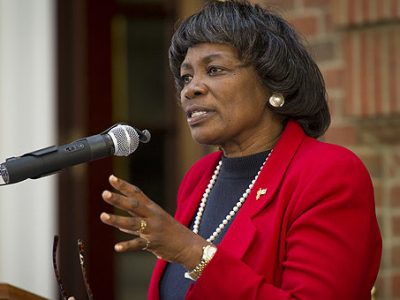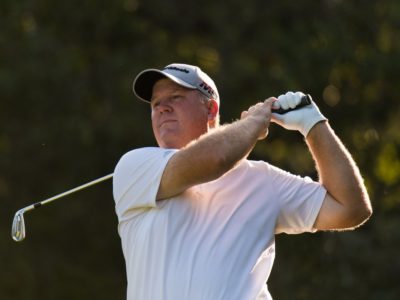By Mike May
Authentic, Genuine, Dedicated, and Passionate, those four words best describe the personal and professional life of the late World Golf Hall-of-Fame course architect, Pete Dye.
Sadly, the world lost Dye when he died two years ago, January 9, 2020 at the age of, 94. Fortunately, his legacy of work, of this longtime Hoosier resident, remains intact, thanks to the many golf courses, which he designed and redesigned over the years.
Dye’s work as a golf course architect began in 1961 in his adopted home state of Indiana, when he and his wife Alice designed the Heather Hills (now, Maple Creek) Golf and Country Club in Indianapolis.
If you never had a chance to meet Dye, a great way to learn about this golf visionary is to ask anybody who knew him and worked with him. Besides his wife Alice, the one person who worked longer with Pete was his son PB and he had the highest respect for his father.
“My dad put a shovel in my hand at seven, I was driving a tractor at eight, I was operating a bulldozer at age nine and a backhoe at ten,” recalled PB, which is short for Paul Burke.
According to PB, now in his mid-60s, one of the reasons why he worked so long with his father is because they had similar mindsets.
“The apple doesn’t fall far from the tree,” admitted PB. “Our philosophies are quite parallel. I had a great teacher for a long, long time. I remember every topographical map that I looked at with my dad.”
PB and his brother Perry were raised with old-fashioned, traditional values. PB and Perry worked for everything they had and earned every dollar they made.
“We were raised as workers and not as the boss’s kid,” noted PB. “My dad was a ditch digger and not an architect.”
PB considers himself to be a ditch digger, too and he enjoyed the ditch-digging journey with his dad.
“We had a lot of fun building golf courses,” added PB.
PB also learned that the commitment necessary to build a great golf course is similar to what it takes to raise children.
“The more you are there, the better they turn out,” said PB.
Clearly, Pete Dye was a hands-on golf course designer and father, succeeding at both.
PB is also quick to comment on the important role that his mother, Alice, played in the Dye family.
“Mom and Dad were a great team,” said PB. “They helped a lot of people. Mom was also a great golfer as she won more than 50 amateur titles. She won everything but the U.S. Women’s Amateur.”
Of all the many golf courses that PB and Pete worked together on, he distinctly remembers the last one — The Golf Club in New Albany, Ohio when Pete was in his mid-80s.
“Looking back, that was probably Dad’s first year with Alzheimer’s.”
Another great memory of PB’s was designing and building the Harbour Town Golf Links on Hilton Head Island, South Carolina. Pete designed the course alongside Jack Nicklaus, who served as the golf course consultant. Pete had known Nicklaus for years, as the two families had a connection. Pete’s father, Paul Francis Dye, used to play golf with Nicklaus’ father, Charlie.
“We started at Harbour Town in September of 1968 and on Thanksgiving morning in 1969, they played the first PGA Tour tournament there,” remembered PB. “On the morning of that opening round on Thanksgiving Day, I was putting sod above the bunker next to the 18th green when they were teeing off the 10th.”
Four days later, Arnold Palmer came walking down the tournament’s 72nd hole with a one-stroke lead. Palmer pulled his approach left of the 18th green. It finished in an oyster bed at low tide. Palmer found his ball, chipped it to 15 feet and then made the tournament-winning putt.
“Afterwards, Palmer publicly thanked Pete Dye for designing such a great golf course,” said PB. “Thank goodness that it was low tide and Palmer found his ball.”
That endorsement helped launch Pete Dye’s career which can best be described as authentic, truly genuine, extremely dedicated, and quite passionate.
Pete Dye learned his craft building courses in Indiana and is a true son of the Hoosier State.









